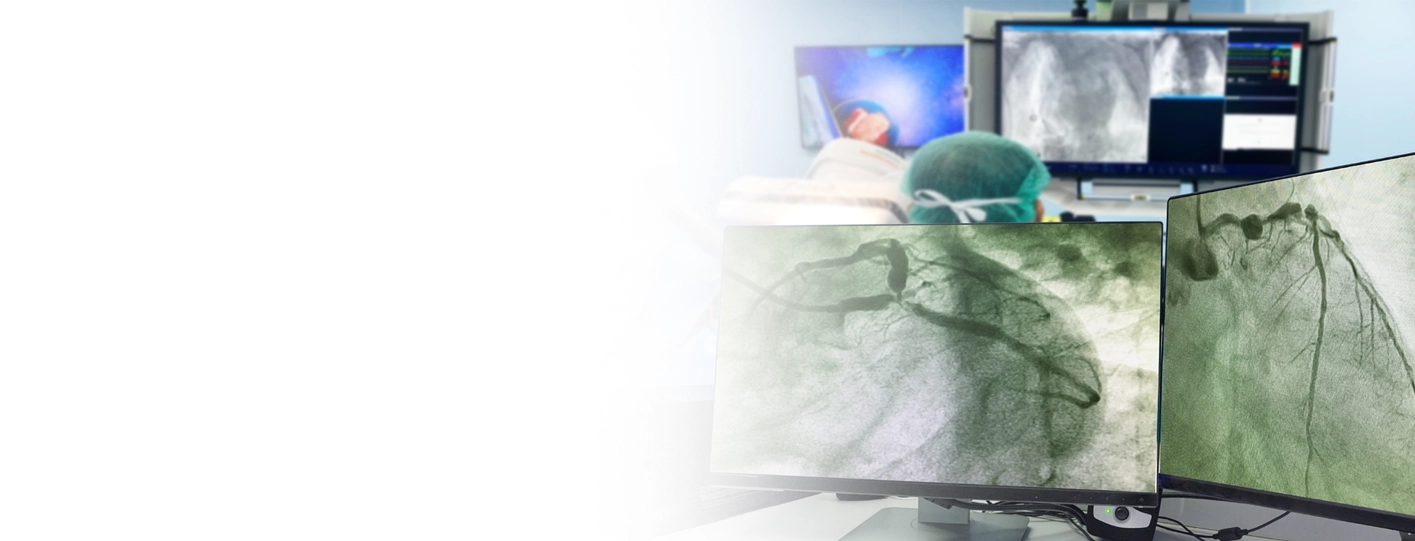



It is a medical imaging technique used to obtain a clear picture of what is happening inside, or in the lumen of, blood vessels and organs, especially arteries, veins, and heart chambers. Blood vessels do not show clearly on a normal X-ray; hence, a special dye known as a contrast agent is injected into your blood first to highlight any issues with blood vessels.
Now, do not confuse angiogram and angiography. Angiography is the procedure, and the X-ray images created during angiography are known as angiograms.
Angioplasty is a minimally invasive procedure that expands narrowed or blocked arteries. This procedure involves using a balloon to push plaque (a fatty substance that builds up) aside, improving blood flow. It treats conditions like atherosclerosis, often during the same session.
Angiography can help diagnose several issues affecting blood vessels, including:
Angioplasty can help treat the following medical conditions:
Angiography happens in a hospital’s X-ray or radiology room.
Angioplasty involves the following steps:
The specialist numbs the skin near your wrist, arm, or groin.
Then a small cut is made.
A catheter with a tiny deflated balloon on its tip is inserted into an artery.
There are many types of angiograms used to diagnose a variety of conditions.
There are 2 main types of angioplasty.
It's a safe and painless procedure. However, for a few days afterwards, it's common to experience:
It is a safe procedure without complications.
Some of the rare complications are:
prolonged bleeding from the catheter insertion site in the groin or wrist
The recovery after angiography is usually quick, with most individuals going home the same day. You can resume normal activities within a day or two.
Recovery from angioplasty depends on the severity of your condition and how properly you follow your doctor's advice. It generally takes about one to two weeks before returning to normal activities. You need to avoid heavy lifting and strenuous exercise during this period.
Angiography versus Angioplasty:
| S.No | Angiography | Angioplasty |
| Purpose | Detects blockages or issues in blood vessels | Treats the narrowed or blocked arteries |
| Procedure | Injection of dye and X-ray imaging (angiogram) to inspect blood vessels | Balloon inflation and sometimes stent placement to open the blocked arteries |
| Role | Acts like a detective to find the exact region of blockages | Acts as a helper to clear the blocked path of blood flow |
| Duration | Generally, takes 30 minutes to 2 hours | Usually, takes 30 minutes to 2 hours |
| Recovery | Fast; most go home the same day | Takes 1-2 weeks; light activities recommended |
Q1: What Is The Difference Between An Angiogram And Angioplasty?
A: An angiogram is a diagnostic test that uses imaging to detect any blockages in your blood vessels, while angioplasty is a procedure to open those blocked arteries with the help of a balloon and restore blood flow.
Q2: What Is The Difference Between Angiogram Vs. Angiography?
A: Angiography takes comprehensive images of blood vessels using dye and X-rays, and an angiogram is the name of the X-ray image produced during angiography.
Q3: What Is The Purpose Of Angiography And Angioplasty?
A: Angiography helps doctors see where blockages are in your blood vessels. While angioplasty fixes those problems by opening the blocked arteries to enhance blood flow.
From Recent Advancements in Heart Care to Tips and Tricks to make your Heart Healthy Again, stay updated with reliable and informative blogs by our experts.